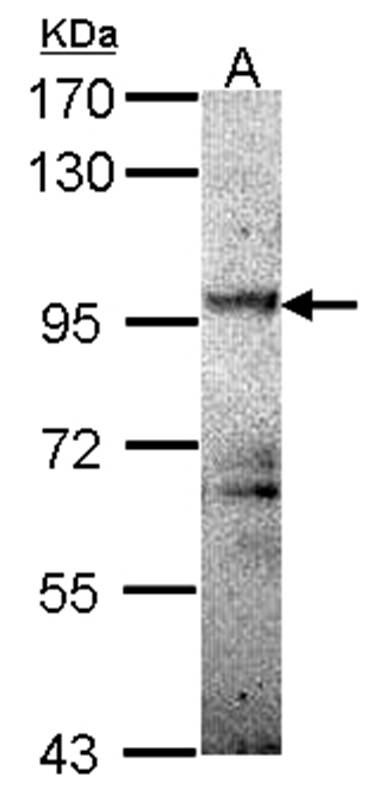PKD2 antibody [C1C3]
GTX102212
ApplicationsImmunoFluorescence, ImmunoPrecipitation, Western Blot, ImmunoCytoChemistry, ImmunoHistoChemistry, ImmunoHistoChemistry Paraffin
Product group Antibodies
TargetPRKD2
Overview
- SupplierGeneTex
- Product NamePKD2 antibody [C1C3]
- Delivery Days Customer9
- Application Supplier NoteWB: 1:500-1:3000. ICC/IF: 1:100-1:1000. IHC-P: 1:100-1:1000. *Optimal dilutions/concentrations should be determined by the researcher.Not tested in other applications.
- ApplicationsImmunoFluorescence, ImmunoPrecipitation, Western Blot, ImmunoCytoChemistry, ImmunoHistoChemistry, ImmunoHistoChemistry Paraffin
- CertificationResearch Use Only
- ClonalityPolyclonal
- Concentration0.99 mg/ml
- ConjugateUnconjugated
- Gene ID25865
- Target namePRKD2
- Target descriptionprotein kinase D2
- Target synonymsHSPC187, PKD2, nPKC-D2, serine/threonine-protein kinase D2
- HostRabbit
- IsotypeIgG
- Protein IDQ9BZL6
- Protein NameSerine/threonine-protein kinase D2
- Scientific DescriptionThe protein encoded by this gene belongs to the protein kinase D (PKD) family of serine/threonine protein kinases. This kinase can be activated by phorbol esters as well as by gastrin via the cholecystokinin B receptor (CCKBR) in gastric cancer cells. It can bind to diacylglycerol (DAG) in the trans-Golgi network (TGN) and may regulate basolateral membrane protein exit from TGN. Alternative splicing results in multiple transcript variants encoding different isoforms. [provided by RefSeq]
- Storage Instruction-20°C or -80°C,2°C to 8°C
- UNSPSC12352203
References
- Tandon M, Salamoun JM, Carder EJ, et al. SD-208, a novel protein kinase D inhibitor, blocks prostate cancer cell proliferation and tumor growth in vivo by inducing G2/M cell cycle arrest. PLoS One. 2015,10(3):e0119346. doi: 10.1371/journal.pone.0119346Read this paper






![IHC-P analysis of human endometrium adenocarcinoma tissue using GTX83817 PKD2 antibody [5G1]. Antigen retrieval : Heat-induced epitope retrieval by 10mM citrate buffer, pH6.0, 100oC for 10min. Dilution : 1:50](https://www.genetex.com/upload/website/prouct_img/normal/GTX83817/GTX83817_1858_IHC-P_w_23061420_693.webp)